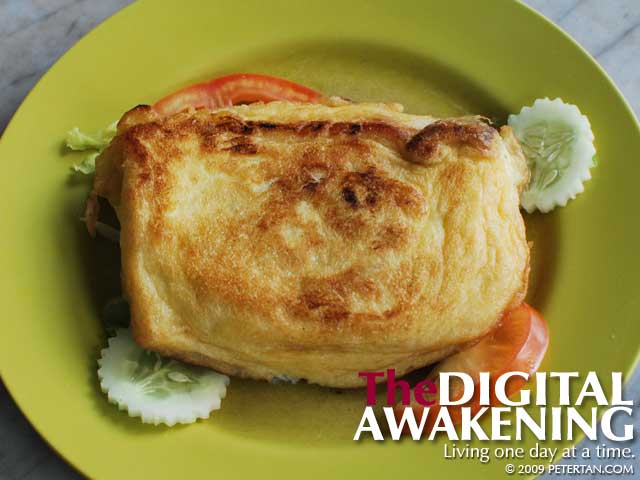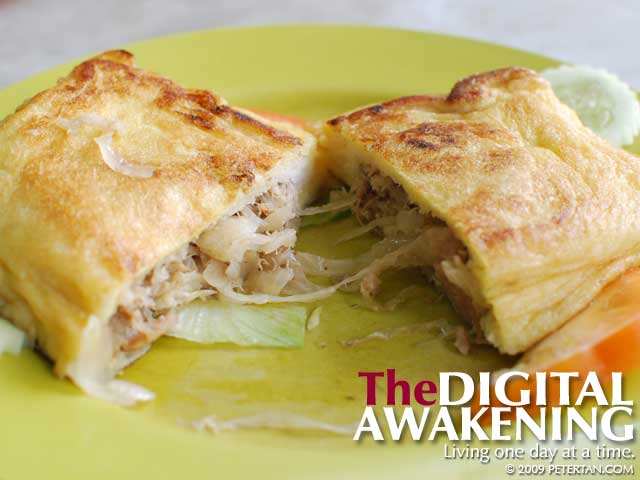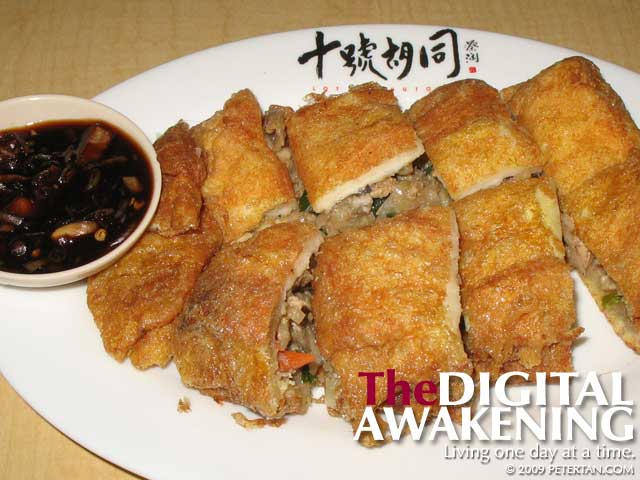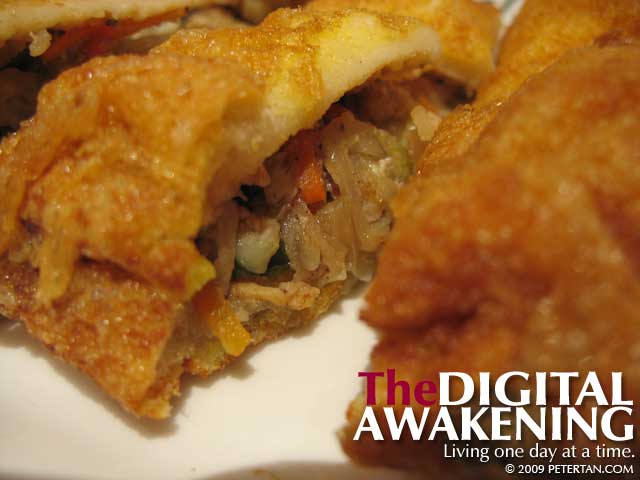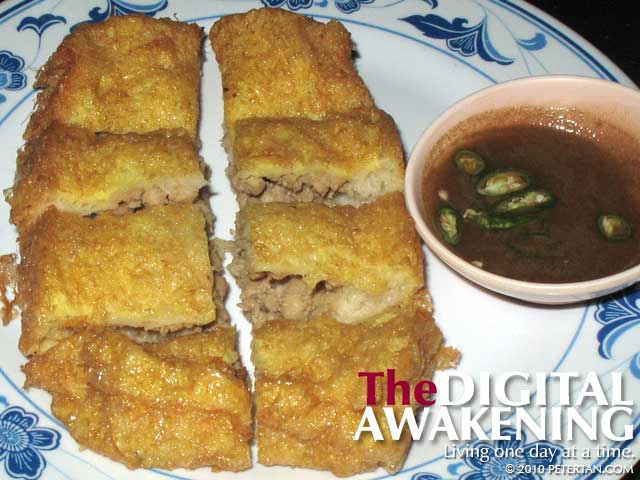
Roti babi – Song River Cafe, Gurney Drive, Penang.
My quest for delicious roti babi saw me discovering a stall selling roti back in my hometown in Penang. This island is also where I first grew a dislike for this dish of Hainan and Peranakan origin. I was barely in my teenage years then. My mother used to make it once every few months. I was only allowed to eat only one half portion of the roti babi because she considered me too young to be eating too much of such oily food.
That was no great loss to the young me. The greasiness of the deep fried egg-coated bread dipped in the weird tasting “ang moh tau eu”, the Hokkien name for Lea and Perrins Worcestershire Sauce, and eaten with sliced red chillies, always made me nauseous. I guess the shredded cabbage bits contributed to that malady as well. As a kid, I was already a fussy eater and cabbage was one of the vegetables that my taste buds were greatly averse to. To make a long story short, over the years, I have gradually come to love it and have been having cravings for roti babi in recent years.
We made our way up to Penang on Tuesday morning, dropped the cats off for boarding in Ipoh Garden and had a late lunch with Wuan’s parents at Ipoh Old Town. We checked in at about 7pm at the Gurney Resort Hotel & Residences, our journey delayed by intermittent rain along the North South Expressway. We were tired but not that hungry and decided on Song River Cafe which was just a short distance from the hotel. I was delighted when I saw that the lor bak stall also served roti babi and duly ordered one.
Lets just say that I have eaten more delicious roti babi elsewhere. There wasn’t any hint of crab meat, potato or carrot in the filling. Perhaps, they were well mixed into the minced pork. The Worcestershire sauce also tasted bland, none of that nauseous-inducing flavour that I have come to like. One serving costs RM3.50. My cravings are definitely not satiated. The quest continues.

